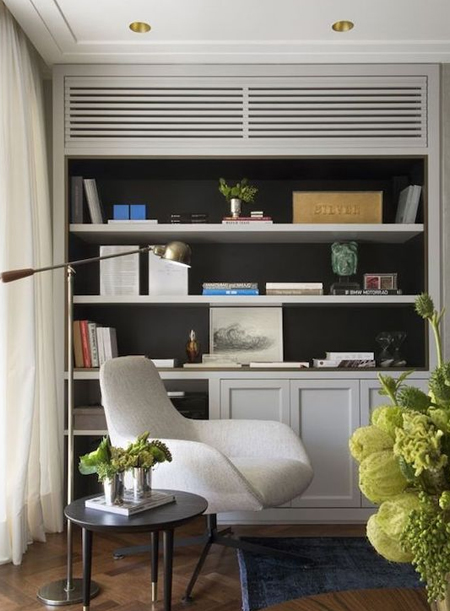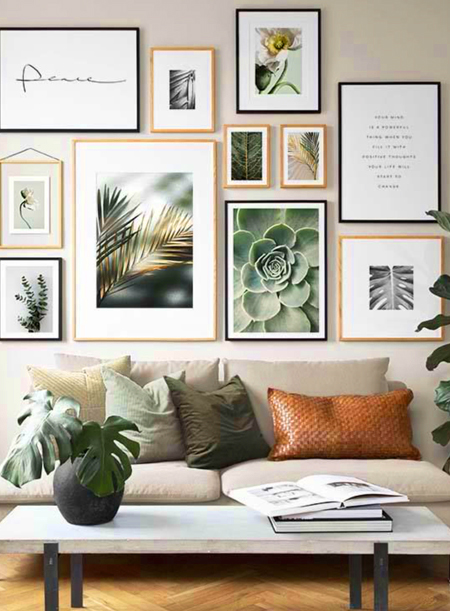How to Hide, Cover Up or Disguise Eyesores in a Home
Every home, particularly older builds, have fittings or fixtures that need hiding, boo-boos that need covering up, or eyesores that need to be disguised can be dealt with easily, quickly and affordably.
28/06/2022
From intercom or telephone jacks to unsightly (non-removable) stains or burns, every home has a least one area that needs to be hidden away, covered up or disguised. Luckily, interior designers have a way or working around items that cannot be fixed to make them less visible so that you no longer see them.
With smartphone technology, many items that were previously incorporated into the home are no longer required, things such as telephone jacks, intercom panels, and even bad stains or damage to flooring. All of these could be put right if you were re-decorating or improving a home but not so much if you don't have the budget and just want to do cosmetic makeovers in and around the home. Let's take a look at how to hide, cover-up or disguise the most common eyesores in a home:
1 | Damage to walls
Any type of damage or fixtures on walls can easily be covered up or hidden out of sight, for example, telephone points or jacks, intercom panels, electrical distribution boards, or defunct security panels. Now that we use smartphones for communication and to wire into home security, fixtures in walls are no longer necessary but are difficult to remove or fill in. It is easy to hide these by hanging a small wall gallery or canvas artwork, especially if these are in living areas
Wireless technology and smartphones have done away with ugly fixtures such as phone jacks, intercom panels or phones and security panels and these can be disguised by hanging a piece of artwork over the fixture.
Many older homes still have a place that was used to house a telephone or intercom. In this area, setting up a small gallery of interesting images or photos will instantly hide any ugly outlets or covers and make for an interesting feature.
2 | Large visible fixtures
I received an enquiry the other day from a reader asking for advice on how to disguise an air conditioner. The air conditioner was no longer working, and they couldn't afford to have the unit removed and the wall fixed up. I have also had plenty of enquiries from readers wanting to disguise a water heater that is mounted inside the home rather than installed in an attic or roof space, which is acommon problem if the dwelling is multi-level.
An easy solution to hide a water heater anywhere in the home is to build an enclosure to surround it. If it is in a kitchen or bathroom, assemble a floor cabinet that will accommodate the water heater and provide storage for cleaning products in a kitchen or act as laundry storage in a bathroom to keep towels warm.
Successfully disguising an old, non-working, air conditioner is another easy project, especially one that is mounted high up on a wall or below a window, as you still find in many older homes. In both instances, a built-in cupboard can be installed to cover up the unit and provide additional storage or shelving for display.
Whether you have an old air conditioner mounted in a wall or a board covering up the opening if you don't have the funds now to fix up, put your DIY skills to good use and build a bookcase around or a cupboard that fits over that you can use for extra storage or display purposes.
3 | Scratched, Chipped or Damaged Flooring
A common complaint and one that usually involves a high cost to replace is unsightly flooring. While the solution depends on the problem, there are still plenty of ways that you can put into use to cover up unsightly flooring or do a "quick-fix".
• Scratched or faded laminate flooring
Laminated flooring looks fantastic in a home but, like many other flooring options, it is easily scratched and can become faded over time when installed in high-traffic areas. Entrance halls, passages and the kitchen are the most common areas that wear quickly and the best solution to prevent this and to cover up scratched or faded areas is to use rugs.
• Stained or worn carpeting
Worn or stained carpeting is another area that might need to be disguised, particularly in a rental property or older home. Once again, rugs and large mats can be used to cover up unsightly areas or you can purchase an affordable edged carpet to fit over the entire area.
• Cracked or chipped tiles
Damage to tiles is not always easy to disguise and it depends on where the tiles are located. One affordable solution to disguising cracks or chips in tiles is to use epoxy putty. Alcolin have a range of epoxy putties that set hard, and are easy to mix with oil paint if you need a specific colour.
Use oil paint to tint and add colour to Alcolin epoxy putty to match the existing tile and fill in cracks and chips to disguise any damage.










